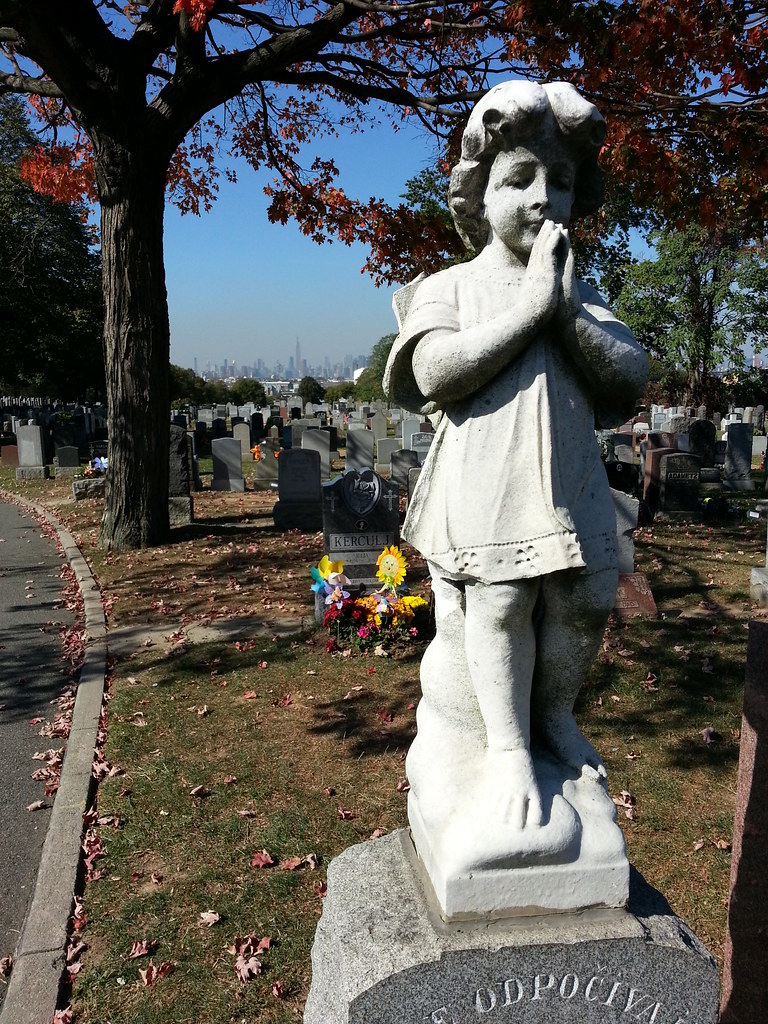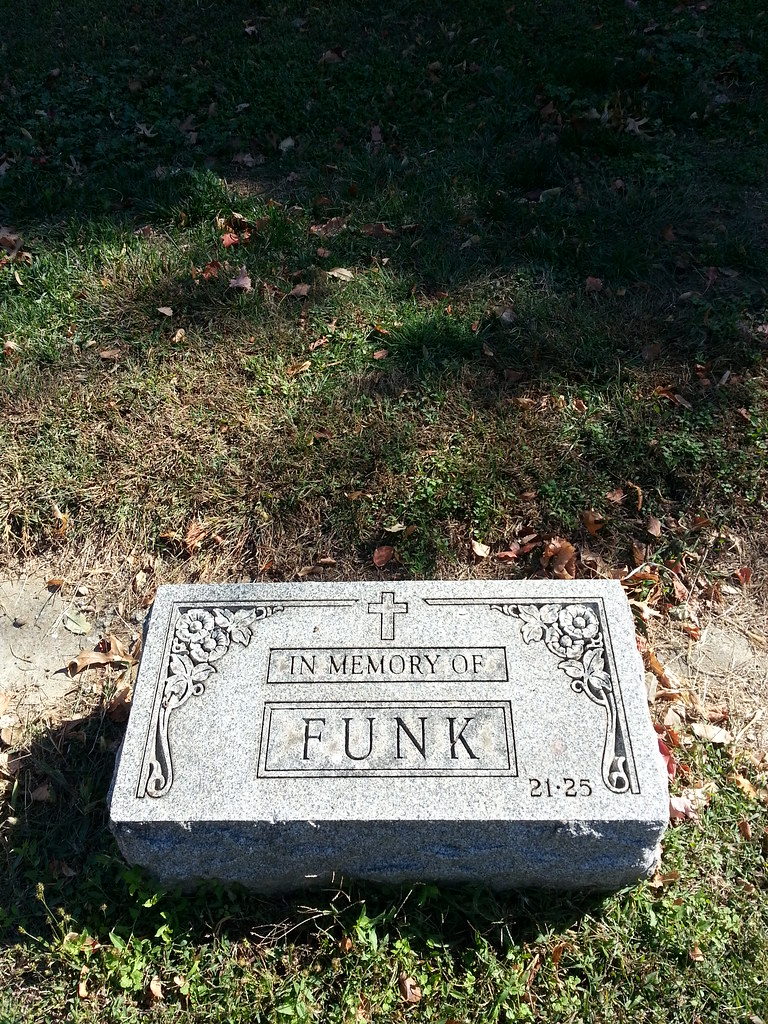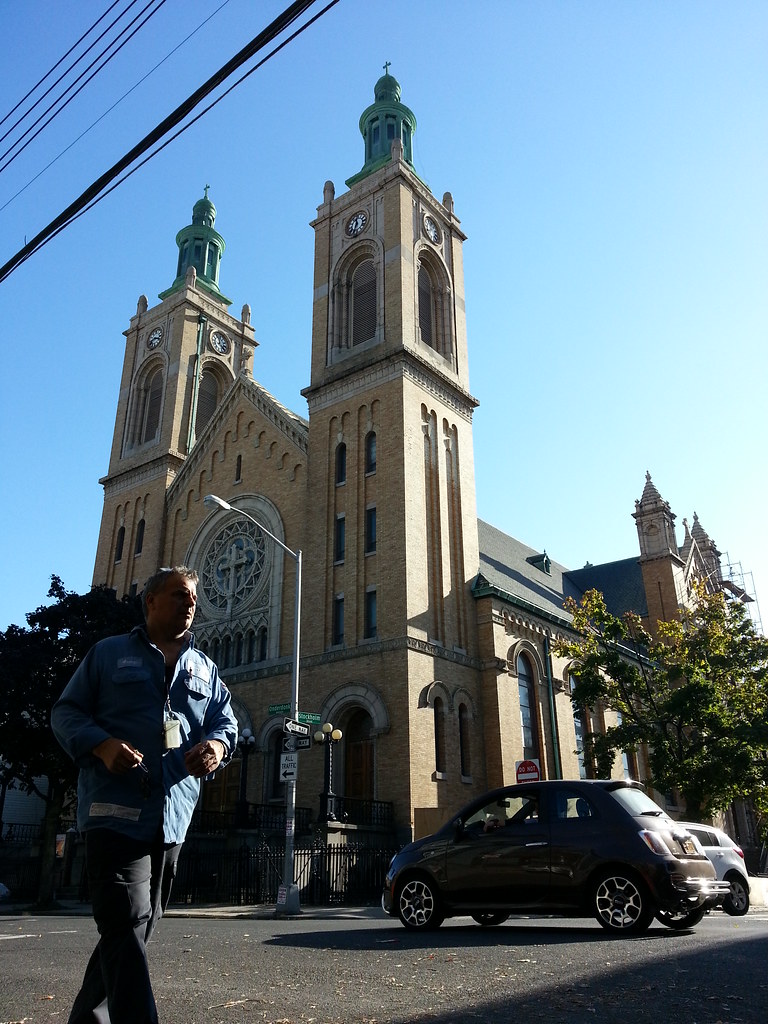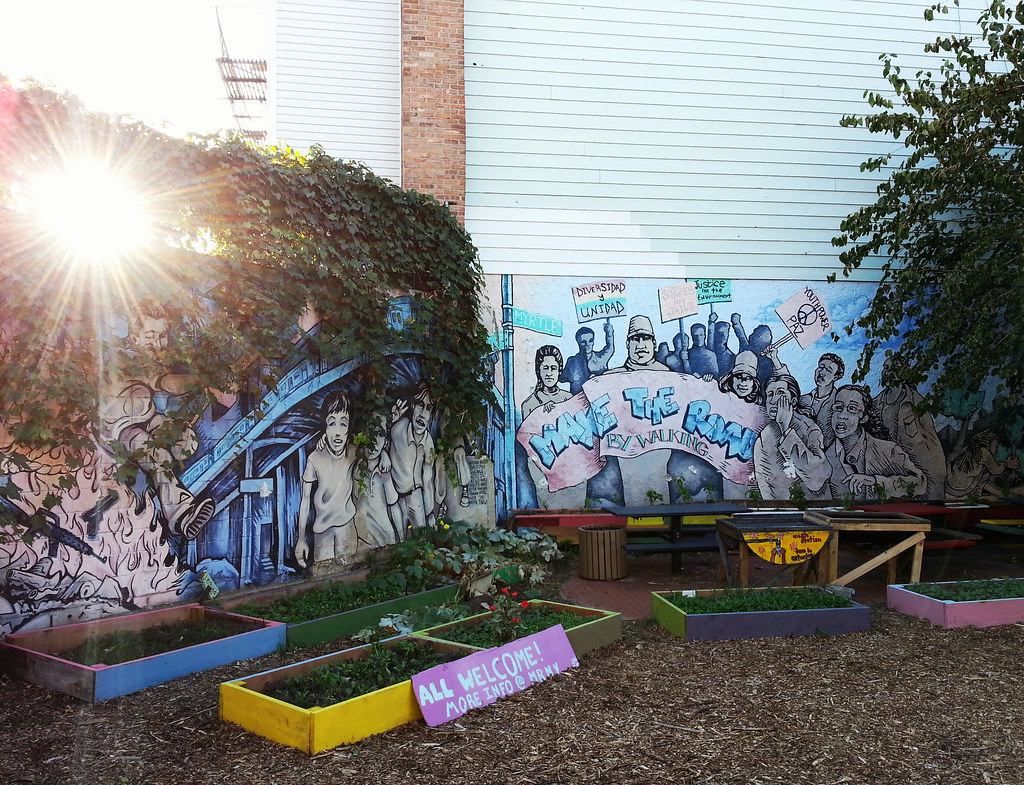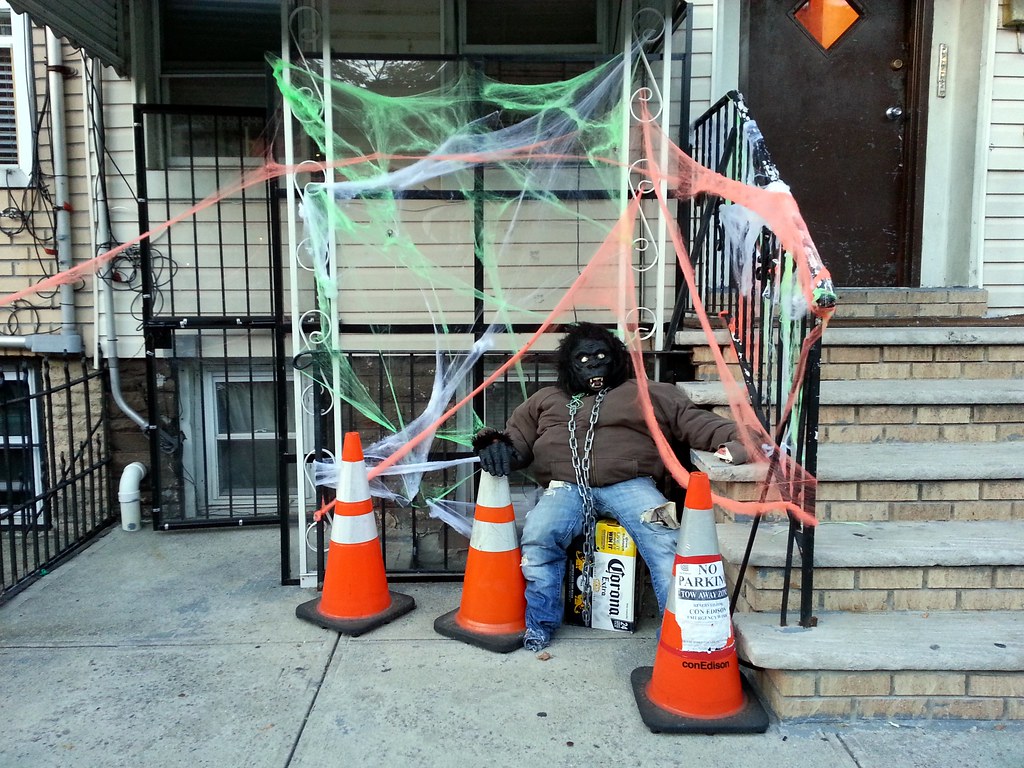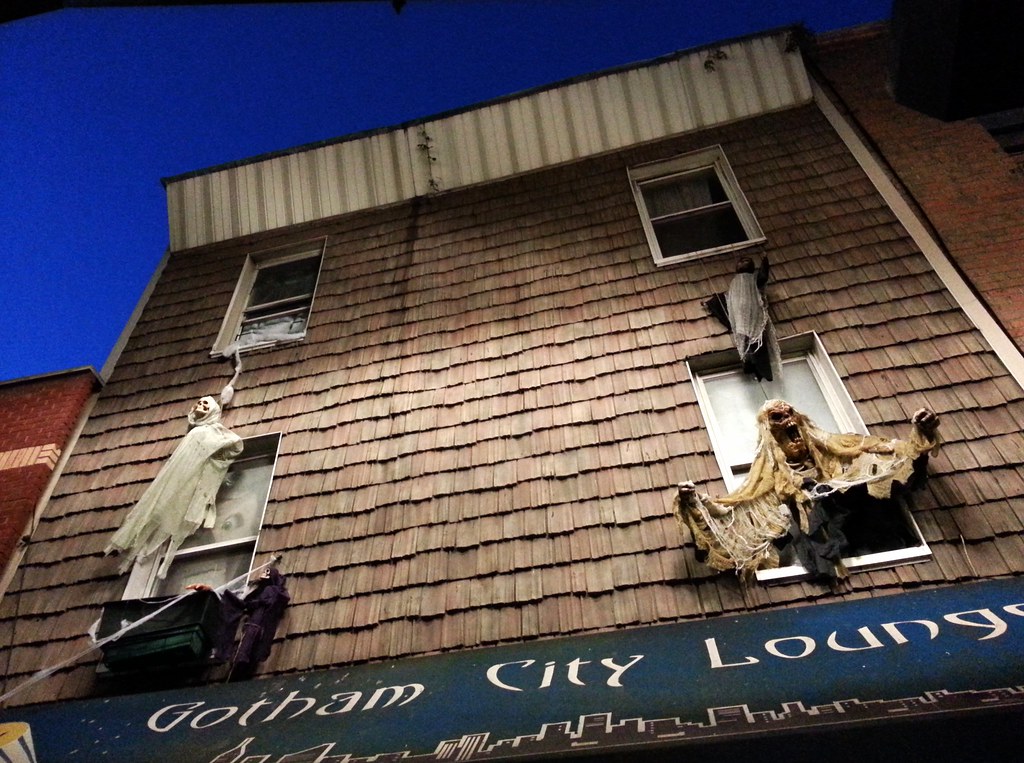
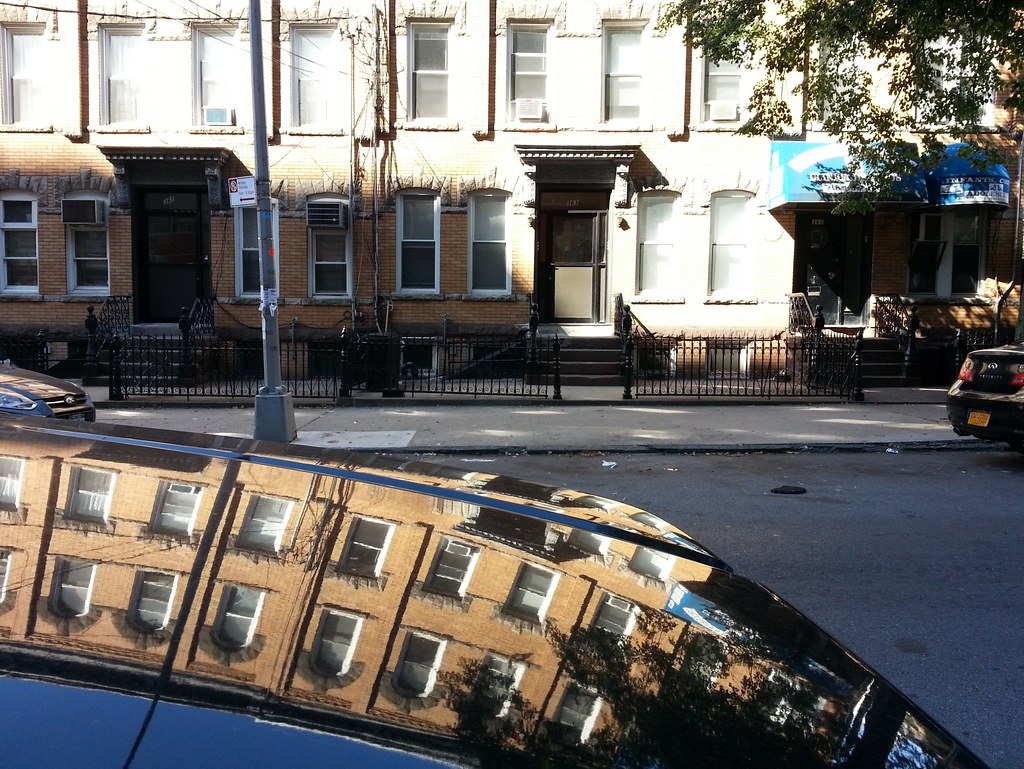
According to the Department of City Planning, the city's geographic center (specifically, the city's centroid) lies somewhere near this spot in Bushwick on Stockholm Street between Wyckoff and St. Nicholas Avenues.
(We recently passed a different spot on Queens Boulevard with its own claim to this title, although it's not clear what that claim is based on.)
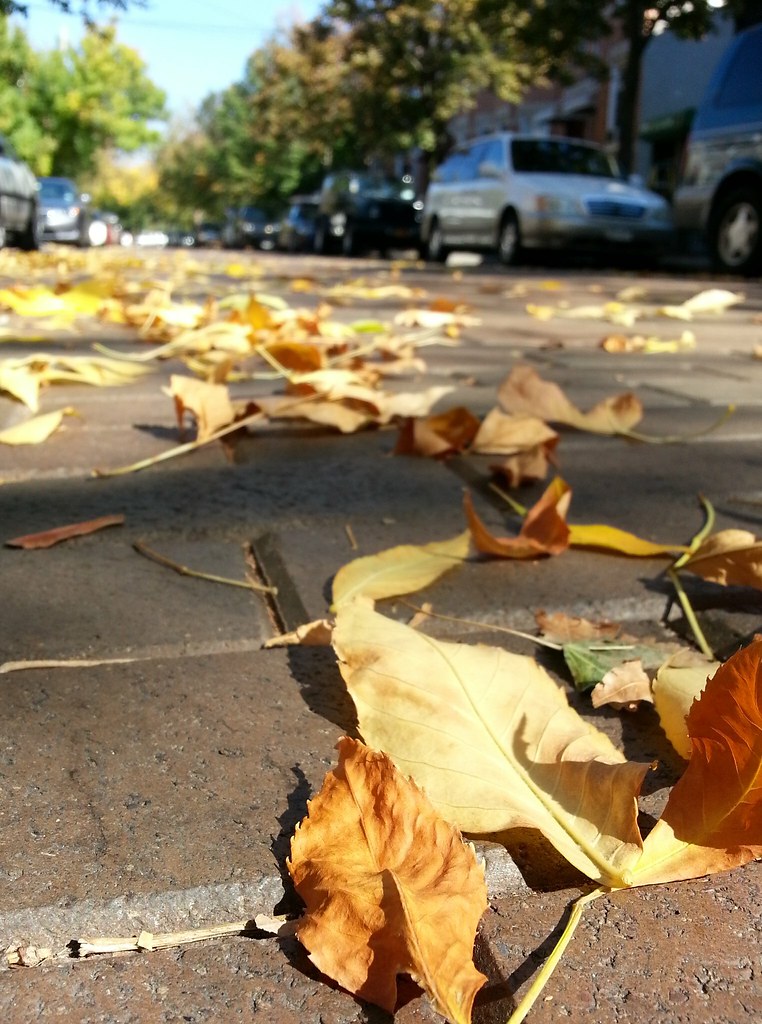
From the NYC Landmarks Preservation Commission's designation report:
The Stockholm Street Historic District, located in the western part of Ridgewood, Queens, is a one-block ensemble of brick rowhouses representing one of the most intact, harmonious, and architecturally-distinguished enclaves of working-class dwellings built in New York City during the early twentieth century. The historic district consists of thirty-six houses, one former stable, and two garages, lining both sides of a brick-paved street. Thirty-five of the houses were constructed between 1907 and 1910, when Ridgewood was being developed by German-Americans and immigrants from Germany. The rows, which feature full-width wooden porches with columns, projecting bays, uninterrupted cornice lines, and bricks produced by the Kreischer Brick Manufacturing Company of Staten Island, were designed by the architectural firm Louis Berger & Company and built by Joseph Weiss & Company. In addition, the historic district has Ridgewood's only-extant brick street pavement. The district retains a high level of integrity and the ambience that has distinguished it since the early twentieth century.You can explore the block yourself in Street View.

This appears to be a personal residence sitting on cemetery property at the edge of Linden Hill United Methodist Cemetery.

at Linden Hill Jewish Cemetery (which abuts Linden Hill United Methodist Cemetery, where the previous three photos were taken)
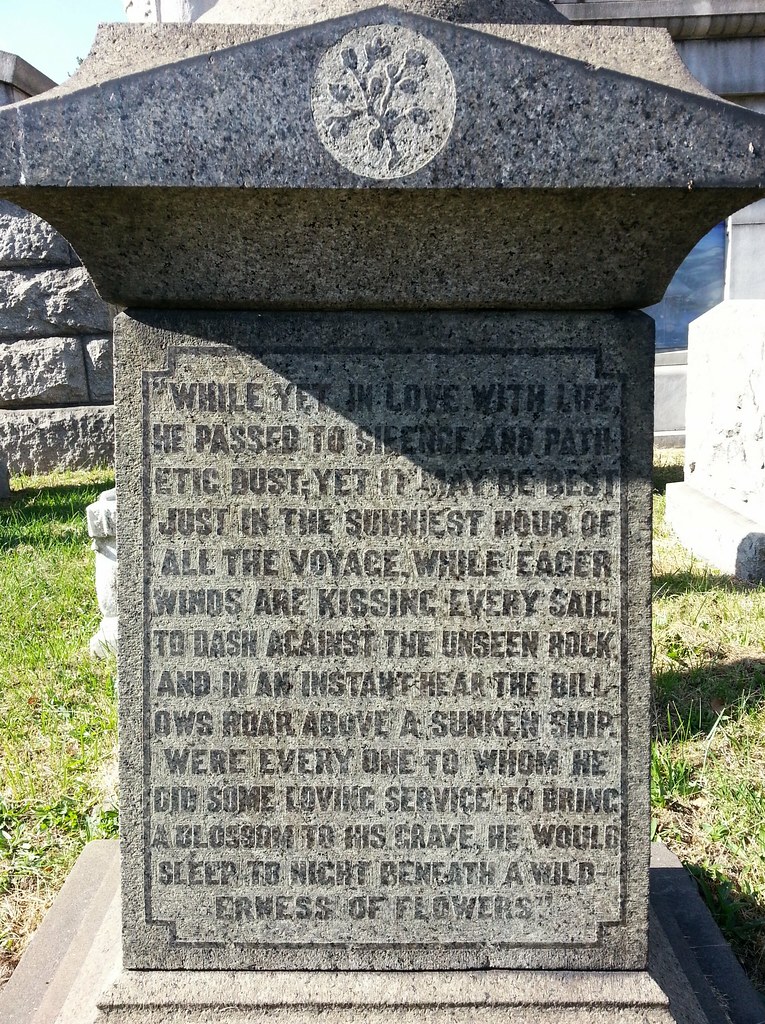
"While yet in love with life, he passed to silence and pathetic dust; yet it may be best just in the sunniest hour of all the voyage, while eager winds are kissing every sail, to dash against the unseen rock and in an instant hear the billows roar above a sunken ship. Were every one to whom he did some loving service to bring a blossom to his grave, he would sleep to night beneath a wilderness of flowers."
(Adapted from a eulogy given by Robert G. Ingersoll, "the Great Agnostic", for his brother.)
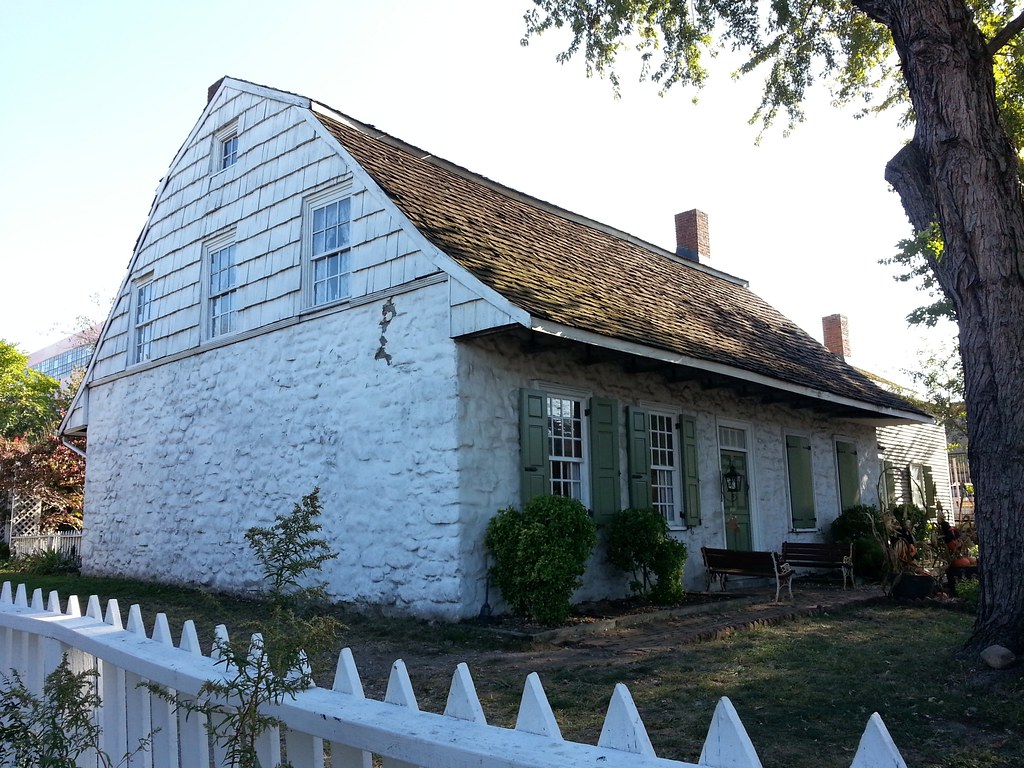
According to the Greater Ridgewood Historical Society, this house, which now serves as a museum, dates back to 1709. The NYC Landmarks Preservation Commission, however, reports that, based on its architecture, the structure looks to have been built no earlier than the mid-18th century, and possibly as late as the first quarter of the 19th century, although the commission's report suggests it's possible that "parts of the foundation or stonework of the house exist from an earlier period of construction and that the house was enlarged, rebuilt, or remodeled." Regardless, much of the current building is actually considerably newer: the house was reconstructed in 1980-82 after being severely damaged by a fire in 1975. Prior to the fire, the building had been used by various 20th-century owners "as a scrap glass business and livery stable, a speakeasy, the office of a greenhouse company and a factory for spare parts for the Apollo space program".
Sitting in the house's backyard, enclosed by a white picket fence, is a large rock that was unearthed by city workers in 2000 at the direction of a local Queens historian. Some believe (though many disagree) that the rock is Arbitration Rock, a glacial boulder that was used in 1769, "along with a heap of stones and an oak tree, to mark the border between Kings [Brooklyn] and Queens Counties, ending a bitter boundary war that had festered for more than 100 years."

The longtime home of Monsignor James Kelly, who celebrated his 50th year with the parish in 2010: "Today I want to thank the Lord for the gift of survival . . . This survival has been a gift, not an accomplishment. It is no credit to me that I have received the gift of life, good health, and friendship — gratuitously given, willingly received."


